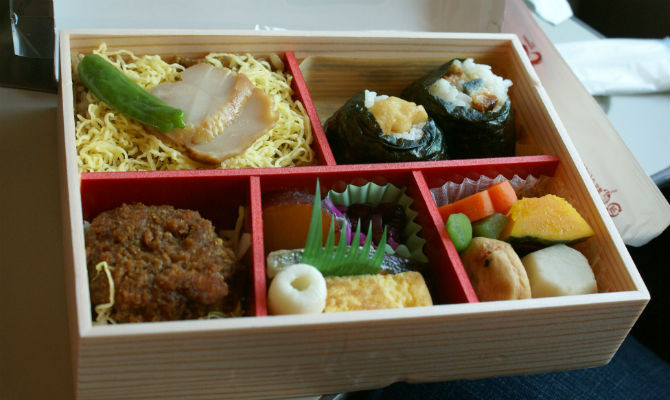What People Eat In Japan (It's Not Only Sushi)
Tokyo has 226 Michelin-starred restaurants, and they're not just sushi spots. According to Japan Guide, regional dishes vary across the country, but dishes usually fall into categories like rice, seafood, meat, noodle, nabe (hot pot dishes), soya bean, and yoshoku (Japanized Western dishes). Here are a few examples of popular Japanese cuisine that doesn't involve rolled-up bites of fish and vegetables.
Donburi is a common dish that's essentially a bowl of rice with other food as a topping, like stewed beef, tempura, chicken and egg, or raw seafood. It's found on a variety of restaurant menus in Japan and can be tailored to an individual's taste.
When grabbing a quick meal, Japanese people often choose bento, which are single-portion take-out boxes with many different ingredients. They're usually a combination of meat, fish, vegetables, pickles, or rice, and can be eaten hot or cold. Bento boxes are especially popular at train stations and airports.
Udon are a common type of noodles served in Japan and are usually served hot or cold. The noodles are made of wheat flour and include toppings like tempura, fried tofu, and mountain vegetables.
Shabu shabu, a Japanese nabe dish, calls for thin slices of meat, vegetables, seafood, mushrooms, and tofu, which is cooked by dipped it into hot soup. The final step is to dip the items in sesame sauce before the savory pieces are eaten.
Tonkatsu, or deep-fried pork cutlets, are usually eaten with shredded cabbage atop cooked rice.
Osechi-ryori is a subset of Japanese cuisine, consisting of dishes traditionally eaten on Oshogatsu, or New Year's Day, in Japan. Historically, it was taboo to cook on the first three days of the year, so these dishes are either stewed with sugar or preserved with vinegar. One example is kurikinton, or candied chestnuts and sweet potatoes.
